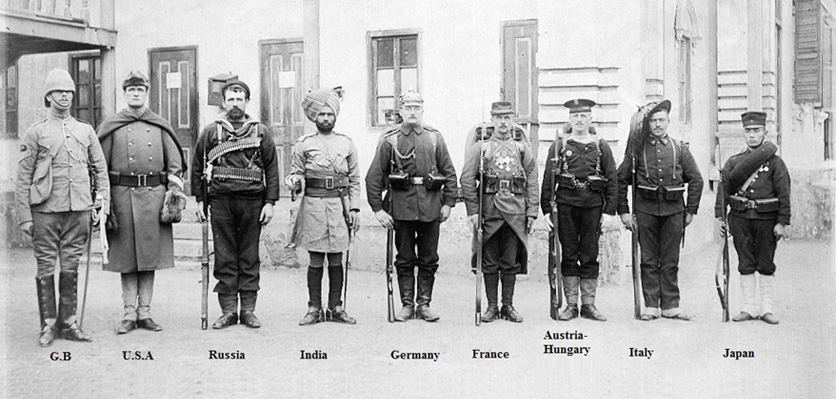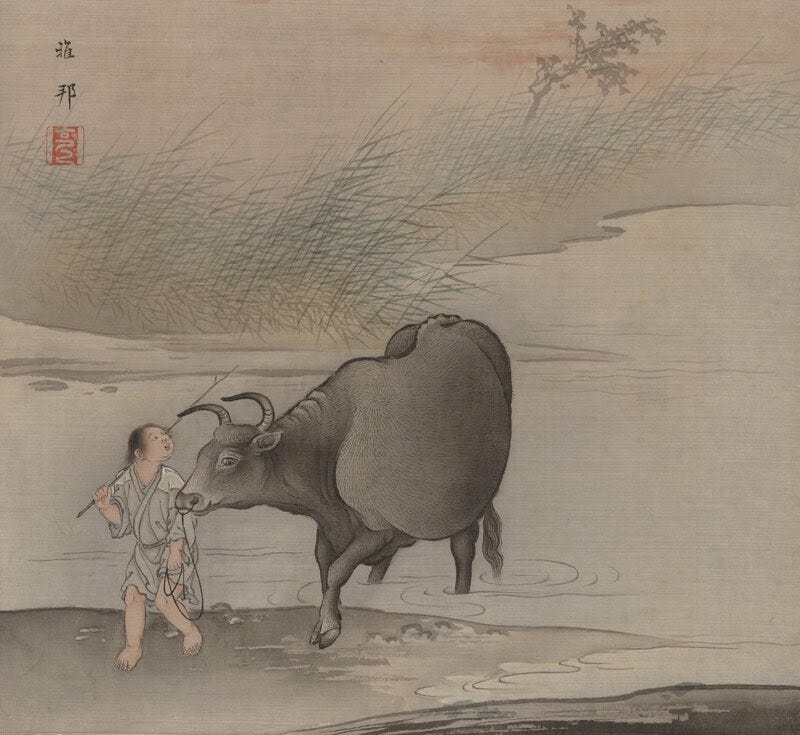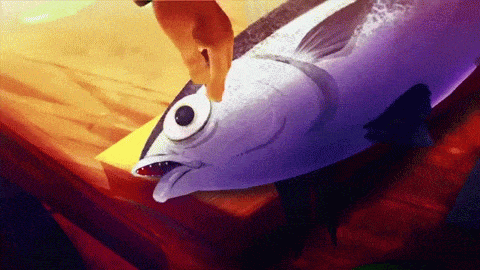
“If we eat hamburgers for a thousand years, we will become blond. And when we become blond we can conquer the world.”
Since its inception as a civilization stylized as “Nippon” with a penchant for violently backwards feudalistic practices, Japan had the most peculiar unusual relationship with meat, perhaps the only country with a history since early ancient times of the subjugating ruling class barring eating meat as a staple from the Japanese masses as a mechanism for the meat eating ruling clans to maintain power physically.
How Japan went from being an almost entirely vegetarian country to a huge consumer of meat
Business Insider
Mar 7, 2016
https://www.businessinsider.com/how-japan-became-hooked-on-meat-2016-3
The winds of change started blowing, at first mildly, in the eighteenth century. It was the Dutch who sowed in Japanese minds the idea that eating meat is good for health. The Japanese came to see the meat-loaded diets of the tall Europeans as a symbol of progress, of breaking with feudal, hierarchical society.
In 1872, Japanese diets took a fast swerve toward meat. That year, on January 24, a feminine-looking, poetry-writing emperor Meiji publicly ate meat for the first time, giving the nation permission to follow his example.
Over just five years, beef consumption in Tokyo shot up more than thirteen times (what made it possible were imports from Korea).
Meiji and his government saw meat not only as a way to modernize Japan and boost the health of the average citizen but also as a way to bolster the strength of the Japanese army.
Back then, typical conscripts were small and thin — over 16% of candidates failed to meet the minimum height of four feet eleven inches.
The American occupation after the Second World War gave another powerful boost to the Japanese hunger for meat. The Japanese observed the war victors stuffing themselves with hamburgers, steaks, and bacon.
The words of Den Fujita, the chief of McDonald’s Japanese operations, sum up the prevailing sentiment pretty well: “If we eat hamburgers for a thousand years, we will become blond. And when we become blond we can conquer the world.”
“Not Befitting Our Divine Country”: Eating Meat in Japanese Discourses of Self and Other from the Seventeenth Century to the Present

Why Eating Meat Was Banned in Japan for Centuries
Atlas Obscura
https://www.atlasobscura.com/articles/japan-meat-ban
In 675 A.D., Emperor Tenmu issued the first official decree banning consumption of beef, horse, dog, chicken, and monkey during the height of farming season from April to September. As time went on, the practice would be solidified and expanded into a year-round taboo against all meat eating.
After Emperor Meiji assumed power in 1868, the Japanese government moved to end their two centuries of isolation and adopt Western practices and technology as quickly as possible.
Plus, many believed “that one reason why the Japanese had poor physiques compared to Westerners was that they did not eat meat or dairy products,”
As Japan opened up to the world, it began to absorb meat-based dishes from Korea, China, and the West. Soon, expensive Western-style restaurants serving meat popped up in cities, followed by affordable Japanese restaurants serving a medicinal beef stew, which would evolve into the dish sukiyaki.

The Japanese ruling class did eat meat, but forbade its consumption by the masses.
In the late 16th century, a Portuguese chronicler Luis Frois during Hideyoshi Japan observed the Japanese do not flinch at killing a fellow human, but make a big squeamish fuss killing a chicken raised in their yard because it is considered dear family. Thus the samurai class preferred wild bush meat. The majestic crane often was killed and eaten when spotted but the yard chicken was coddled.
How Portugal Forged an Empire in Asia
The Diplomat
Jul 11, 2019
https://thediplomat.com/2019/07/how-portugal-forged-an-empire-in-asia/
Exemplary terror and wanton violence were therefore integral to Portuguese expansion and the securing of trading rights in Asia right from the start of the European conquest. Diplomacy came second. Examples of Portuguese wanton violence abound throughout the historic record.
Eggs in Cookery: Proceedings of the Oxford Symposium of Food and Cookery 2006
(page 103)
The impact of Southern Barbarians
Now, we shall see what changes occurred after the Japanese met the Europeans. A Portuguese merchant ship, which was filled with Chinese junk, drifted down to a small island in the southern part of Japan in 1543. In 1549, San Francis Xavier came to Japan and devoted himself to diffusing Christianity throughout the country. Later, missionaries of the Society of Jesus visited Japan and energetically propagated their teaching in the latter half of the sixteenth century. Potuguese and Spanish merchants also came for trade. They sailed from the south; so, European people who came from the Iberian Peninsula were called Nanban-jin which means ‘Southern Barbarians’.
The Japanese who became Christians because of the propaganda were liberated from Buddhist and Shinto taboo, and they began eating meat with missionaries. In addition to Christians, ordinary people also began eating beef in areas around Nagasaki and Hirado harbours of Kyushu, which were the anchorage sites of Portuguese and Spanish ships. As a result, the price of beef rose at Nagasaki, and the breeding of pigs for meat was restored in areas around the harbours. During this movement, Chinese ships began to make port calls at the two harbours, and Chinese colonies were established there.
Eating beef, chicken, and chicken eggs came into fashion in the western part of Japan from the end of the sixteenth century to the beginning of the seventeenth century due to the influence of Europeans and the Chinese.
We can find plenty of various recipes today that were introduced from the Iberian Peninsula and China at that time.
One of them, kasutera, is a kind of sponge cake using eggs, and it is still popular today. The word kasutera was derived from bolo de Castella, itself referring to the kingdom of Castille.

The Meat-Eating Culture of Japan at the Beginning of Westernization
Zenjiro Watanabe
https://www.kikkoman.co.jp/kiifc/foodculture/pdf_09/e_002_008.pdf
Westernization and the Promotion of Meat-Eating
It wasn’t until the westernization of Japan during the Meiji Period (1866–1912) that the Japanese were finally able to overcome the centuries of social taboo against meat to enjoy it freely.
However, the taboo was deeply rooted and not easily forgotten. In an attempt to westernize Japan, the Restoration government made various efforts to remove this deep-rooted taboo.
In the fall of 1871, Tsukiji Gyuba, a semi-private meat company specializing in horse and beef, began an advertising campaign with the following statement by Yukichi Fukuzawa:
• “First of all, a common excuse for disliking meat is that since cows and pigs are so big, butchering them is unbearable. Which is bigger, a cow or a whale? No one is against the eating of whale meat. Is it cruel to kill a living creature? Is it not cruel to slice open the spine of a live eel or to cut the head off a live turtle? Are beef and cow’s milk unclean? Cows and sheep eat only grains and grasses, while the boiled fish paste found in Nihonbashi is made from sharks that have feasted on drowning people. Although soup made from black porgy [a marine fish common in Asia] is delicious, it is made from a fish that eats the human excrement discarded from ships. And while spring greens are certainly fragrant and delicious, I expect that the urine applied to the plants the day before yesterday has soaked into the leaves completely. Does beef and milk smell bad? Don’t pickled fish organs also smell bad? The fermented and dried jack-fish meat certainly smells much worse. And what of the pickled eggplant and daikon radish made using the method introduced by our ancestors, by which insect larvae are combined with the rice miso used to pickle them? Isn’t the issue based more upon what we are used to and not used to? Beef and milk provide a great deal of nourishment and are extremely good for the body. They are basic ingredients in the diets of westerners. We Japanese must also open our eyes and begin to receive the benefits to be had from beef and milk.”
The diet of the Emperor, which included meat, brought about a large turning point in social views toward the traditional taboo against eating meat.
In 1872, the fifth year of his reign, the Meiji Emperor broke the 1,200-year ban on meat eating by celebrating the new year by eating meat. The fact that the emperor ate meat of his own accord encouraged Japanese citizens of every social class to also begin eating meat. Moreover, 1872 saw a change in religious laws, as Buddhist monks were also permitted to eat meat.
However, opposition also remained strong. In the early morning of February 18 of the same year, ten monks attempted to break into the Imperial Palace. Guards at the main gate shot five of the invaders, killing four and seriously wounding another. The remaining five were arrested. In order to maintain the emperor’s authority, the news was not publicized in Japan.
However, a British newspaper, The Times, reported the event as an attempted assassination.
The monks claimed that since the arrival of foreigners in Japan, a large number of Japanese had begun eating meat and that this was destroying the soul of the Japanese people.
They also threatened the emperor, stating that they would not stop, even if it meant killing him if he did not meet their demands and expel the foreigners, institute a national religion that combined Buddhism and Shintoism, and return to a feudal system.
Before beef cattle were pilfered from Joseon Korea and introduced into Meiji Japan, crane meat indulgence became the transitional rage with the Japanese.
Red-crowned Crane: Sarurun Kamuy (God of the Marshes)
https://www.japanvisitor.com/japan-nature/red-crowned-crane
Once widespread, this bird, the meat of which was once reserved for emperors, became a prized target for the hastily armed hunters relishing the lifting of feudal restrictions.
How many cranes there were prior to their slaughter in the late 1800’s and early 1900’s is not known, but we do know that it was wiped out almost everywhere following the Meiji Restoration (1868).
Endangered Japanese crane population recovering in Hokkaido
Japan Today
Oct 18, 2020
https://japantoday.com/category/national/feature-endangered-japanese-crane-population-on-the-up-in-hokkaido
With efforts to save the species ramping up, the birds have seen their population recover somewhat in recent years after they were all but wiped out in the late 1800s and early 1900s by hunters and the shrinking of marshlands due to development.
Sought after for their meat, the cranes, called “tancho” in Japanese, were once prevalent in many parts of the country, and even protected by the Tokugawa shoguns, but the lifting of a hunting ban after the Meiji Restoration of 1868 saw numbers plummet until they had almost disappeared.
They were once believed extinct but were rediscovered in the 1920s in the Kushiro Wetland.
Modern japanese Cuisine: Food, power, and National Identity
Katarzyne Joanna Cwiertka
2006
Page 26
All in all, by the late sixteenth century the eating of meat of domesticated animals acquired a status of taboo in Japan. This situation is clearly reflected in the account of Joao Rodrigues (c. 1561–1633), a Portuguese Jesuit missionary and pioneer scholar of the Japanese language and culture, in his recollection of his lengthy residence in the country, stretching from 1577 to 1610:
“The more solemn the banquet among the Japanese, and also in China, the greater number of different broths and shiru provided for each guest. Each of these is made from different things; some are made from high-quality fish, others from meat of birds which they prize, such as the crane, which ranks in the first place, the swan in the second, and wild duck in the third. This is still true even today, for on no account will they use anything but wild game and never the domestic animals and birds which they rear.
They will not eat the latter and in this they differ from the Chinese, who esteem the flesh of the ass more than that of the horse, the latter more than the cow; they have an even higher regard for pork, lard and bacon, as well as domestic duck, hens and geese, while lowly persons eat dogmeat and other things. In keeping with their customs the Japanese abominate all this, for on no account whatsoever will they eat ass, horse, or cow, much less pig (except boars), duck, or hens, and they are naturally averse to lard.
They eat only wild game at banquets and their ordinary meals, for they regard a householder who slaughters an animal reared in his house as cruel and unclean; on the other hand they do not show this compassion toward human beings because they kill them with greater ease and enjoyment than they would an animal.
This is despite the fact that some people, especially the traders who have had dealings with the Portuguese since their arrival in Japan, now eat cow, pig and hens, but such things are not eaten at solemn banquets or, for that matter, anywhere in the entire kingdom.”
Rodrigues’ testimony raises the point of slaughtering animals reared within one’s household. Some scholars argue that the spread of meat-eating taboo in Japan went hand in hand with the diffusion of the concept of uchi (inside, private domain), which represented a moral attachment to, and responsibility for, the members of one’s household, including animals. This attitude was reflected in the custom of exchanging chickens between households before their slaughter in order to avoid killing those that were raised within one’s own uchi.
The First European Description of Japan, 1585: A Critical English-Language Edition of Striking Contrasts in the Customs of Europe and Japan by Luis Frois, S.J.
Routledge, Mar 14, 2014 — Social Science — 312 pages
24. “Eurpoeans enjoy chicken, partridge, pastries and blanc mange; the Japanese enjoy feral dog, crane, monkey, and raw seaweed.”
Let us take the “strange” potpourri of Japanese items one at a time:
Feral dog was eaten in a dish that today is called sutamina (food for increasing one’s stamina) by men doing fighting or heavy labor outdoors, and by people of either sex suffering from natsu-yasse, or “summer thinning.” The Chinese character for “thin” includes the “sickness” radical, for wasting away was a real disease in Japan for both men and women. Today, Japanese of both sexes — but mostly men — eat liver and leek or fatty eel on rice for their sutamina, but no wolf.
As Frois knew, having eaten with the rulers of Japan, crane was a favorite banquet food of the nobliity, in part beacuse the bird was a symbol of longevity. Frois apparently never ate with Europe’s rulers or he might have known that they also served crane, not to mention stork, plover, peacock, and a few other exotic birds (the Judeo-Christian “great chain of being” cast birds, particularly high-flying birds, as appropriate for European elites).
Monkey is dubious, although one can imagine the Japanese not wanting to waste the meat of monkeys that were killed for damaging crops.
Okada quote Japanese literature confirming all of the foods mentioned by Frois except cat. He believes Frois mistook tanuki (“racoon dog,” Nyctereutus procyonides vivverinus), weasel, or something else for cat. However, considering the fact that cat skin was used for making shamisen banjos it is not unlikely that some parts of the cat was eaten. The irony here is that if cat was eaten anywhere, it was in Europe. Again, de Nolia’s cookbook includes a recipe for roasted cat that purportedly tasted like rabbit or veal, although the author advised against eating the brain ‘lest the dinger become crazy in the head.”
As regards raw seaweed, this is perfectly ordinary food, but one rarely hears about seaweed; the Japanese refer to it as sea grass (kaiso). Japanese people no more eat “seaweed” than we eat “land weed.” The Japanese eat specific varieties of marine algae: nori, ishinori, konbu, wakame, mozu, hijiki, etc. Most of these are processed or cooked but many varieties of raw “seaweed” (the names of which are only know by gourmets) are served on a sushimi platter. The Portuguese term ‘limos da praia’, or “beach slime,” suggests the texture of only two of the six varieties mentioned above. The Portuguese language does not differentiate algae from seaweed, although limo most often refers to slimy algae, whereas algas marinas, or marine algae, is a term generally associated with seaweed, a cover term for a variety of different algae.
“We are terrified to kill a man, but think nothing of killing cows, chickens and dogs; the Japanese are terrified to see animals killed but killing men is commonplace.”
But perhaps Frois’ “larger point” was that the Japanese of the warring-states era had become more comfortable than Eurpoeans with killing each other (as opposed to “others). Indeed, Valignano, who was anxious to recruit young Japanese nobles into the Jesuit order, worried that the Jesuits could not find enough recruits because so many otherwise qualified Japanese were murderers.
Buddhism, with its emphasis on preserving all life, often is cited as the reason why the Japanese made it taboo to kill cows, chickens, dogs, and other animals. That Buddism could exercise such influence seems plausible, although one has to wonder why Buddhist precepts were ignored when it came ot kiling people (just as one has to wonder why Christians frequently ignored their own commandment against killing).
Topsy-turvy 1585: A Translation and Explication of Luis Frois S.J.’s Tratado (treastise) Listing 611 Ways Europeans & Japanee are Contrary
Robin D. Gill
2004
6–24
Europeans love chicken, quail, and blancmange;
The Japanese, wild-dog, crane, monkey, cat and raw seaweed.
